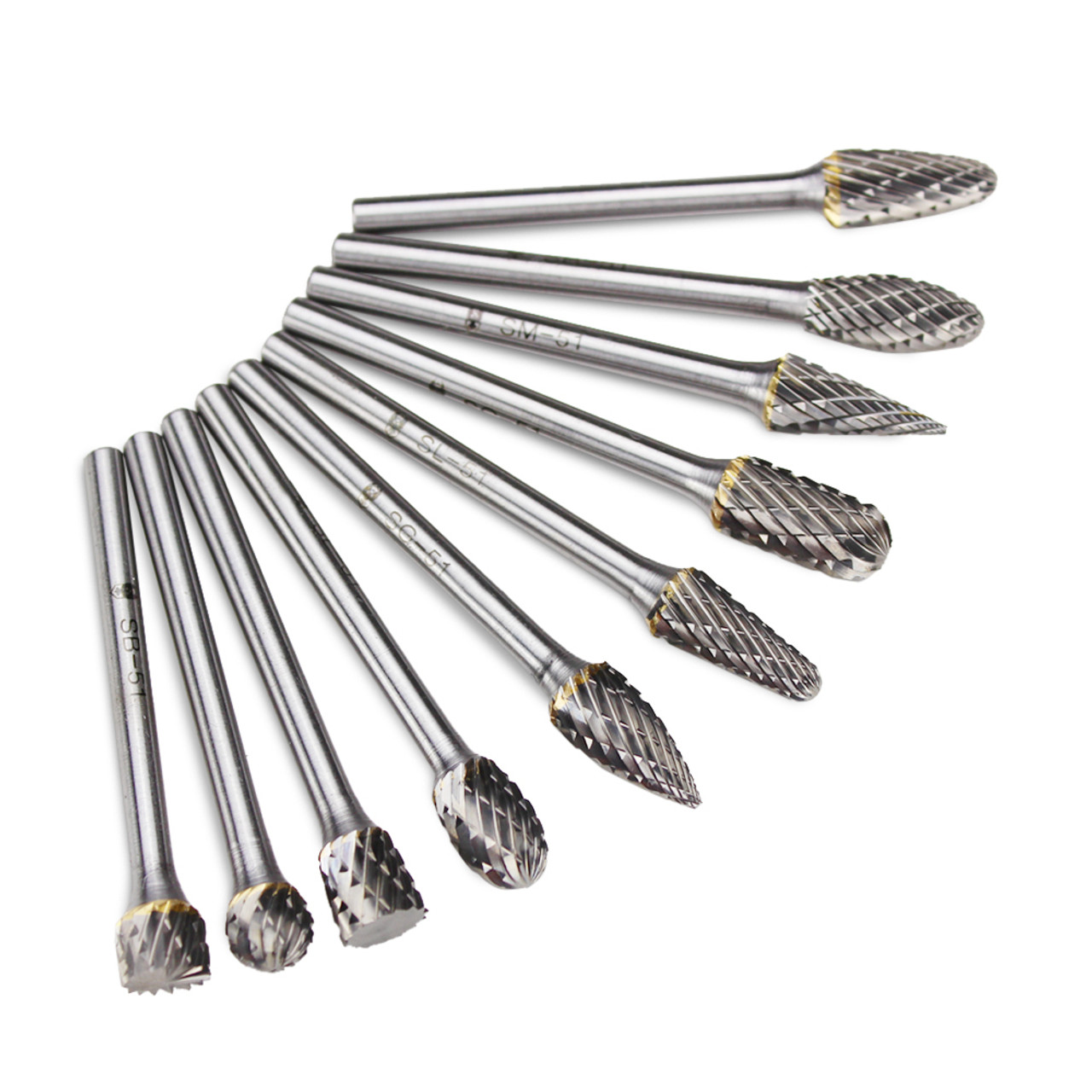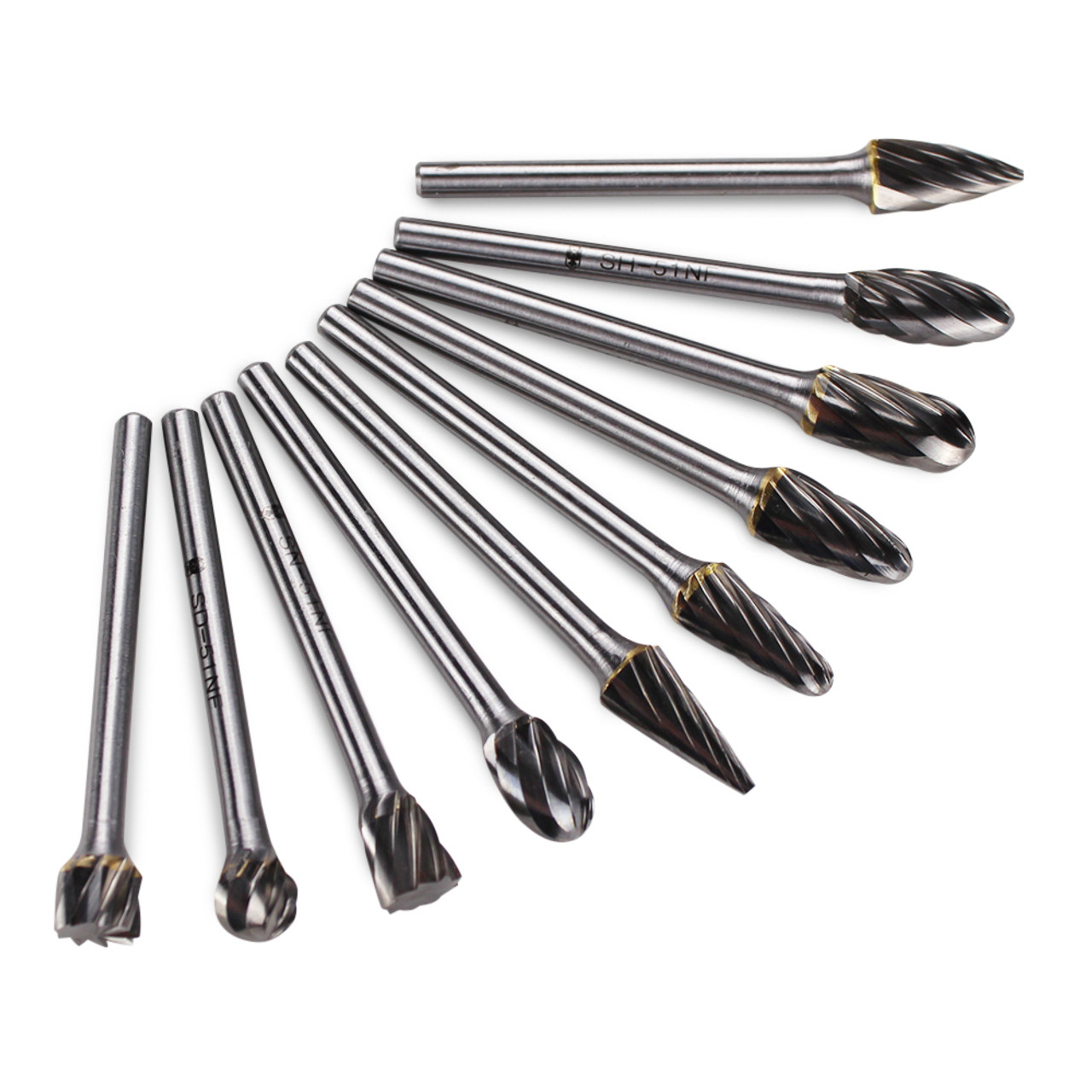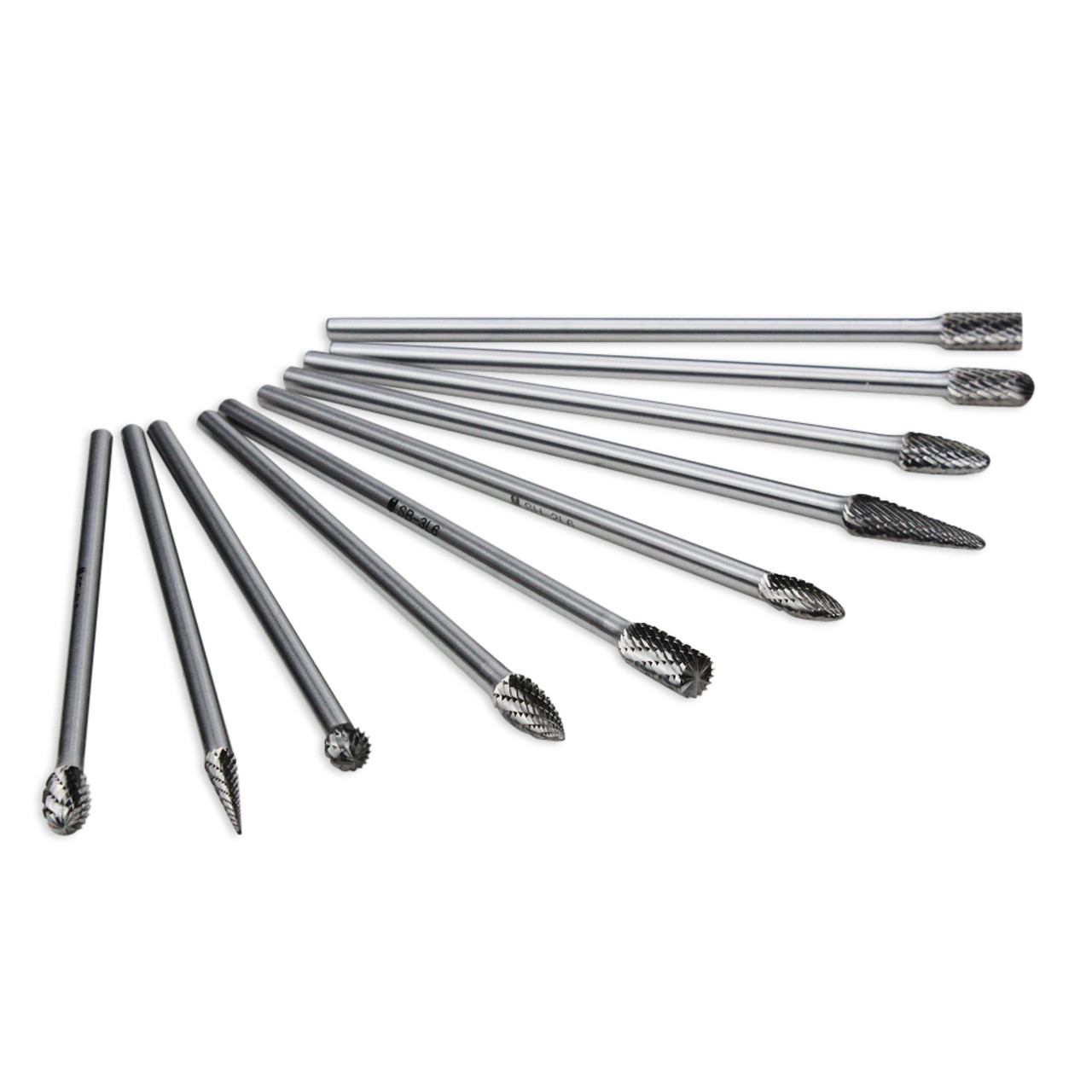Tungsten Carbide Burrs
BHA carbide burrs are manufactured with premium tungsten carbide, enhanced using a silver bonding to provide high-speed cutting with unmatched durability to outlast the competition.
Extra Strong and Long Lasting
Tungsten carbide alone is one of the strongest alloys. This metal is just below a diamond on the Mohs hardness scale. What sets BHA rotary burrs apart from other options is the innovative silver weld that ensures a more durable product and a longer lasting bit.
Tungsten carbide burrs are constructed by welding the head of the burr bit to a 1/4” or ⅛” shank. Traditionally, copper brazing attaches the bur head to the shank. That is a lower cost manufacturing option that often damages the cobalt in the burrs, causing micro cracks. Instead of this, BHA carbide burrs are upgraded to implement a special silver welding process that protects the burr during production and also benefits from a much higher welding strength.
Vibration Reduction & Consistent Grinds
One of the main issues with lower quality carbide burrs is vibration during use, due to lack of uniformity on the cutting head. To create a more reliable and vibration free product, the flutes of BHA carbide burrs are ground with 5-axis CNC machines which offer the highest level of consistency, eliminating vibration for the operator and providing unmatched cutting precision.
What are Carbide Burrs
Aka: carbide rotary burrs, rotary files, die grinder bits, burr bits, burr cutters
Carbide burrs are a rotary cutting attachment for high speed pneumatic tools and power tools used to remove materials from many different surface types. They are useful across multiple industries including automotive, aerospace, metalwork, woodwork, dentistry, windshield repair, welding, and jewelry making, to name a few.
Some of the most common uses for tungsten burrs include:
-
Tool making
-
Deburring
-
Stock removal
-
Cleaning
-
Engraving
-
Chamfering
-
Precision grinding
-
Weld prep
Burr Variations
There are 4 main variations between each type of carbide bur: shape, shank size, burr diameter, and flute cuts.
Shapes of Carbide Burrs
The different shapes of each rotary burr allows for each to provide their own specialized grinding applications. The shapes include:
-
SA - Cylinder
-
SB - Cylinder w/ End Cut
-
SC - Cylinder w/ Ball Nose
-
SD - Ball
-
SE - Oval/Egg
-
SF - Rounded Tree
-
SG - Pointed Tree
-
SH - Flame
-
SJ - Cone (60 Degree)
-
SK - Cone (90 Degree)
-
SL - Tapered
-
SM - Pointed Cone
-
SN - Inverted Cone
Shank Size
The two sizes of burr shanks are ⅛” and ¼”. The smaller burrs can be used for extra fine detailed work and for reaching into very narrow spaces. The larger burrs are capable of more aggressive material removal at a higher speed.
Carbide burrs are meant to be used with compatible sized die grinders, pencil grinders, rotary grinders, and Dremel rotary tools.
Burr Diameter
Each burr shape also has different sized diameters for the burr bit head. Depending on the specific burr, the diameter ranges from 1/16” up to 2”.
Each diameter has specific cutting speed recommended ranges and maximum cutting speeds to ensure they work optimally and to extend the life of the burr. For the recommended RPMs, please see our carbide burr speed chart.
Aluma Cut vs Double Cut
The type of cut on these burs changes both the aggressiveness of the bits as well as the material it should be used on. The two different cuts of BHA burrs include:
Aluma Cut - Also known as “aluminum cut” since this variation is the best carbide burr for aluminum. The wider grooves and the single cut flutes run cooler than the alternative and also create longer chips. These two properties are ideal for aluminum and other ferrous and soft metals that are prone to damage from heat and likely to load up on a burr, clogging the flutes.
Double Cut - Double cut carbide burrs have criss-crossing flutes etched into them, similar to a double-cut metal hand file. Double cut burrs are capable of more aggressive grinding and material removal than aluma cuts. They are best used with harder metals, though they are still useful for other materials like wood, hard rubber, and plastic.






